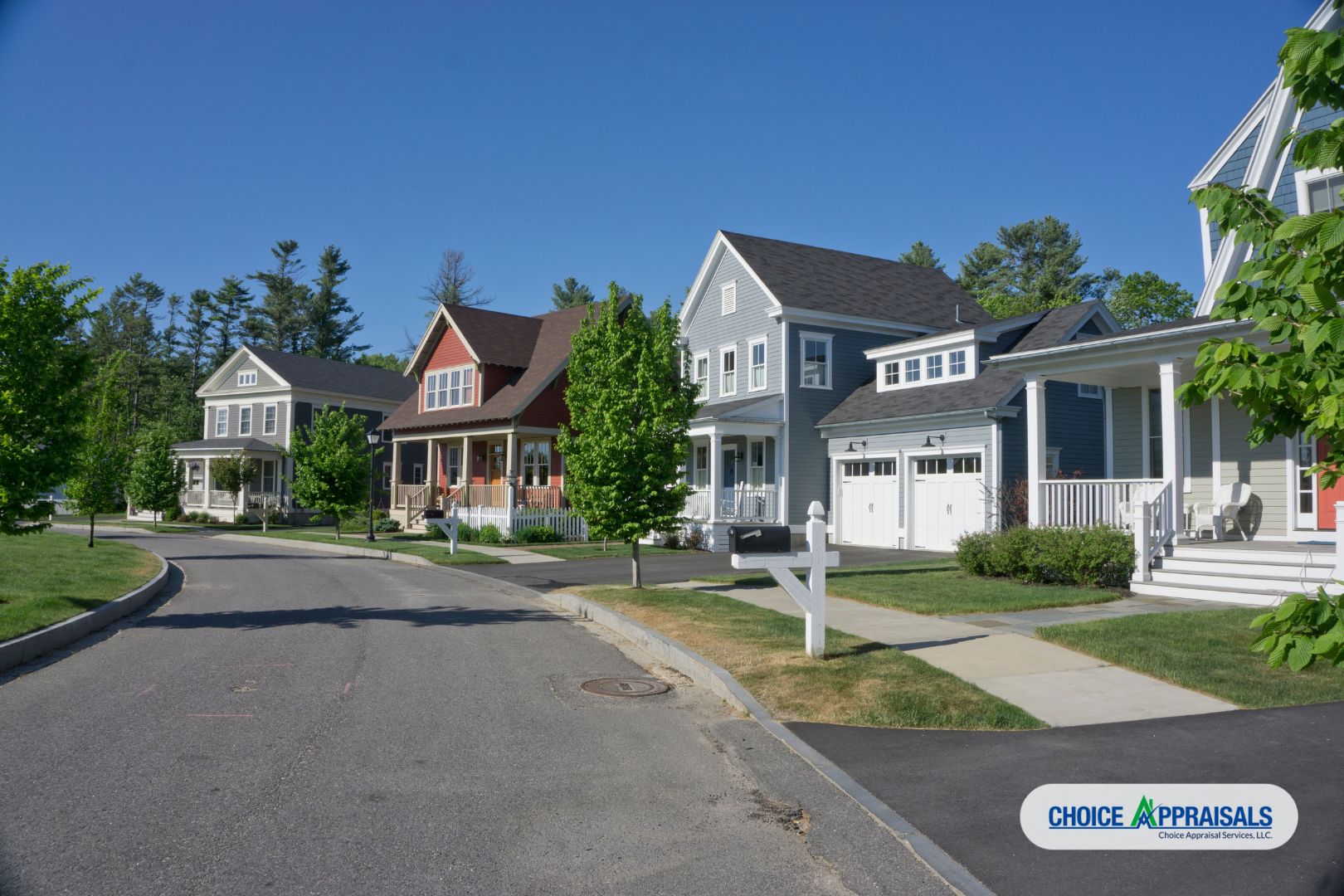The world of real estate appraisal can be complex, especially when it comes to understanding adjustments and why cost per square foot (SF) doesn’t always provide an accurate picture. This article aims to shed light on these concepts, with a particular focus on the real estate market in Louisville, KY.
Introduction
Stepping into the world of real estate, you quickly realize it’s not as simple as buying low and selling high. There’s a science, an art if you will, to understanding property values. This is where the concepts of appraisal adjustments and cost per square foot (SF) come into play.
Appraisal adjustments and cost per SF are like the yin and yang of property valuation. They directly impact how much money changes hands in a real estate transaction. Whether you’re a buyer, a seller, an investor, or a real estate professional, understanding these concepts can mean the difference between a successful deal and a costly mistake.
But here’s the kicker: cost per SF, despite its widespread use, doesn’t always paint the full picture. And that’s where appraisal adjustments step in, fine-tuning the value to ensure it reflects the property’s true worth.
The Concept of Appraisal Adjustments
In the realm of real estate, adjustments are the bread and butter of accurate appraisals. Picture this: You’re comparing two houses. Both have the same square footage, the same number of rooms, and they’re in the same neighborhood. But one has a newly renovated kitchen, and the other doesn’t. Does the shiny new kitchen add value? You bet it does. This added value is what we call an “adjustment.”
Adjustments are changes made to the value of a property to account for differences between it and a comparable property. These differences could be anything — from a renovated kitchen to a swimming pool, or even the proximity to a popular school. In essence, adjustments allow appraisers to compare apples to apples when looking at different properties.
Numerous factors can prompt an adjustment — the property’s location, its condition, the size, the number of rooms, and any unique features it may have. The art of making adjustments is a delicate one. It’s not just about assigning value to individual features; it’s about understanding how all these features come together to influence a property’s overall appeal and market value.
Cost per SF: A Common Misconception
Cost per square foot (SF) is calculated by dividing the total cost of a property by its square footage. It’s commonly used because of its simplicity and its ability to provide a quick comparison between different properties. It’s like saying, “Hey, this apple and this orange are both fruits, so let’s compare them based on their weight.” But as we all know, there’s a lot more to properties than just their size.
A critical issue often overlooked is that even within the same neighborhood, cost per SF can be deeply misleading. Realtors frequently cite average cost per SF for a neighborhood as if it’s a uniform standard, but this practice glosses over significant variations between individual properties. Two homes on the same street with identical square footage can legitimately have vastly different values due to lot size, property condition, updates, layout efficiency, and architectural design.
Consider two 2,000 SF homes in Louisville’s Parkway Village neighborhood. One features an efficient floor plan with a modern kitchen, updated bathrooms, and a finished basement. The other has an awkward layout with wasted space, dated fixtures, and foundation issues. Despite sharing the same square footage and neighborhood, these homes should command significantly different prices. Yet cost per SF calculations would suggest they’re equivalent.
When Cost per SF IS Useful
To be fair, cost per SF does have legitimate applications in real estate. It’s particularly valuable in these scenarios:
- New Construction: When builders are estimating costs or pricing similar models in a new development, cost per SF provides a reasonable starting point since construction materials and labor represent a standardized expense.
- Condominiums: In buildings where units have similar finishes, amenities, and views, cost per SF can be more reliable since many variables are controlled.
- Commercial Real Estate: Office buildings, retail spaces, and industrial properties are often valued primarily on their income potential relative to their usable square footage.
- Market Trend Analysis: Looking at average cost per SF changes over time can help identify neighborhood appreciation trends, even if individual properties vary significantly.
- Initial Budget Planning: For buyers establishing a general budget range, neighborhood cost per SF averages can provide a starting reference point.
However, even in these cases, cost per SF should be just one tool among many – not the definitive measure of value.
Why? Cost per SF doesn’t account for the nuances that make each property unique. It overlooks factors such as location, age, condition, design, and the quality of construction, among others. It’s a one-size-fits-all approach in a world where every property is different.
For another example, imagine two properties in Louisville, KY, each with 2,000 SF of space. One is a newly built luxury condo downtown with high-end finishes, while the other is a 30-year-old suburban home needing significant updates. Using cost per SF, these two properties would appear equal. But are they really? Of course not.
That’s the limitation of cost per SF in appraisals. It’s a blunt instrument in a field that requires a scalpel’s precision. It overlooks the nuances that can significantly impact a property’s value, particularly in diverse real estate markets like Louisville, KY.
So, while cost per SF can give you a starting point, it’s just that — a start. To get an accurate appraisal, you need to dig deeper and consider the unique factors that make each property tick.
The Role of Adjustments in Accurate Appraisals
Adjustments are like the fine-tuning knobs on a vintage radio. They help us dial in the right frequency, or in this case, the most accurate property value.
In essence, adjustments account for differences between the subject property and the comparable properties. These differences could range from physical characteristics like the number of bedrooms, age, and size, to location-related aspects like proximity to amenities or quality of schools. Even factors like the condition of the property, or its appeal in the current market trends, can play a role.
Imagine you’re comparing properties in Louisville’s Highlands neighborhood. Your subject property is a charming 2-bedroom bungalow with a no basement, while a comparable property nearby is similar in many ways but features an additional bedroom and a finished basement. In this case, a downward adjustment would be made to the value of the comparable property to account for these differences.
The process of making adjustments is both an art and a science. It requires a combination of market knowledge, analytical skills, and sometimes, a bit of intuition. But when done correctly, adjustments can bring us closer to an accurate appraisal, helping both buyers and sellers make informed decisions.
The Importance of Accurate Appraisals
An inaccurate appraisal can have serious implications. It can skew the perception of a property’s value, leading to either overpricing or underpricing. This can result in a seller losing out on potential profit, or a buyer overpaying for a property. In a worst-case scenario, it can even derail a transaction entirely.
Consider this scenario: you’re selling a historic home in Crescent Hill, and the appraisal comes in significantly lower than your asking price because the appraiser didn’t properly account for the property’s unique architectural features and prime location. The buyer’s mortgage lender isn’t willing to loan more than the appraised value, and the buyer can’t make up the difference. The deal falls through, leaving you back at square one.
Now, let’s flip the script. You’re buying a new construction property in Norton Commons, and the appraisal comes in suspiciously high. Overjoyed at the apparent instant equity, you proceed with the purchase, only to find out later that comparable homes in the area are selling for much less. The feeling of being short-changed is not a pleasant one.
These scenarios underscore the importance of accurate appraisals in the real estate transaction process. They’re not just numbers, but critical tools that help ensure a fair and equitable exchange of properties. They provide a reliable basis for negotiation between buyers and sellers and give lenders the confidence to provide financing.
Conclusion
We’ve journeyed through the intricate world of real estate appraisal, dissecting the often misunderstood concepts of appraisal adjustments and cost per SF.
Remember, cost per SF, while popular, has both uses and limitations. It serves well in specific contexts like new construction, condominiums, commercial real estate, and broad market analysis. However, it falls short when used as the primary valuation tool for individual residential properties, especially when comparing homes within the same neighborhood that have different characteristics, conditions, and features.
It’s especially problematic when realtors and buyers use it to compare dissimilar properties, falsely assuming that similar locations and similar square footage should equate to similar values. The reality is far more complex, with each property possessing unique characteristics that can dramatically affect its true market value.
Appraisal adjustments take these variables into account. They’re the magnifying glass that lets us see the finer details, providing a more accurate appraisal. It’s a complex process, but it’s necessary for fair and equitable real estate transactions.
Whether you’re a seasoned real estate professional or a novice investor, understanding these concepts is vital. It’s like being handed a compass in the middle of the labyrinth — it’ll help you navigate the market with confidence and make informed decisions.
In the end, the goal is to ensure that every real estate transaction is a fair one. And for that, accurate appraisal adjustments are key.
To learn more about the methods I use to ensure accurate appraisals in Louisville KY. Please feel free to reach out to me via email.




